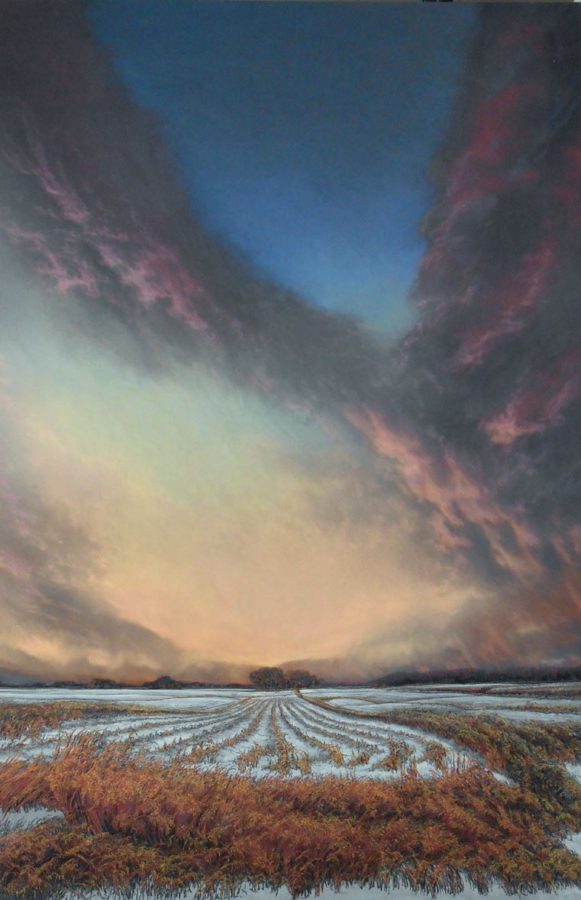Aesthetics of Atmosphere
Courtesy of Iowa State University Museums
Winter, 2014 by Ellen Wagner
February 27, 2015
The atmosphere and sky plays a major role is in artist Ellen Wagener’s pieces. Bill Gallus, professor of geologic and atmospheric sciences, depicted the different elements in the pieces Tuesday, Feb. 24 at the Brunnier Art Museum.
“[Gallus] talked about why the sky looks how it does when it’s purple or when there’s tornadoes or snow what really the science behind that is like,” said Adrienne Gennett, curator of the event and assistant curator of collections and education.
Gallus’ lecture focused on the current pieces that are displayed in the Brunnier Museum, which is Ellen Wagener’s collection “Ever Changing Land.”
Many of the pieces focus on a variety of Iowa skies and landscapes.
“Lightning would be a huge challenge, I think, to put into a painting,” Gallus said.
Lightning is often resembled as zigzag lines, and in real life lightning is more meandering lines that branch off throughout the sky.
During the lecture, Gallus explained how rainbows and double rainbows actually worked, why some tornadoes are white and why some are black, why lightning has different colors and the different effects of clouds.
“It’s cool to learn the actual science behind things like this and understand why our eyes are seeing what the things that they do,” said Aurelie Rozeboom, sophomore in English.
Gallus explained the science behind the colors in sunrises and sunsets, which many of Wagener’s pieces capture.
Gallus also discussed the tornado, Jordan, which came through Iowa almost 40 years ago. After the initial tornado came through, a second tornado was created and was spinning in the opposite direction, which is very rare.
Ellen Wagener’s “Ever Changing Land” collection will be showcased in the Brunnier Art Museum until July 2015.







